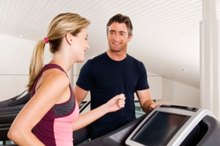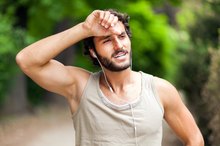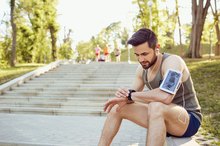What does fact checked mean?
At Healthfully, we strive to deliver objective content that is accurate and up-to-date. Our team periodically reviews articles in order to ensure content quality. The sources cited below consist of evidence from peer-reviewed journals, prominent medical organizations, academic associations, and government data.
- American Council on Exercise; Are Your Clients Performing the Right Kind of Exercise at the Right Time?; Lance Dalleck
- American Council on Exercise; Is the Gain Worth the Pain?; Fabio Comana
The information contained on this site is for informational purposes only, and should not be used as a substitute for the advice of a professional health care provider. Please check with the appropriate physician regarding health questions and concerns. Although we strive to deliver accurate and up-to-date information, no guarantee to that effect is made.
Why Does the Respiratory Rate Remain Elevated After Exercise?
The body's respiratory rate remains elevated following exercise, a phenomenon known as Excess Post-Exercise Oxygen Consumption, or EPOC. EPOC occurs as the body works to return its systems to homeostasis, or the resting state that preceded exercise. The additional oxygen consumption is used to replenish energy stores, return oxygen and hormone levels in the bloodstream to normal, and restore body temperature, ventilation and heart rate. EPOC may last several minutes to up to 24 hours, depending on what type of exercise was performed 1.
Replenishing Energy Stores
Replenishing the body's energy stores requires the use of more energy. During EPOC, the body replaces creatine phosphate and adenosine triphospate, or ATP, fuels that are used in quick bursts of activity. It expends energy to convert the waste product lactic acid to pyruvate, a viable fuel source. In addition, glycogen stores within individual muscles are restocked.
- Replenishing the body's energy stores requires the use of more energy.
- In addition, glycogen stores within individual muscles are restocked.
Balancing Oxygen and Hormones in the Bloodstream
How Long Does an Adrenaline Rush Last?
Learn More
Two changes occur in the bloodstream during exercise that require EPOC 2. The body draws upon oxygen in the blood for energy when working out. Therefore, following activity it must replenish these stores. Secondly, hormones that flood the bloodstream during exercise must be restored to normal levels.
- Two changes occur in the bloodstream during exercise that require EPOC 2.
- Secondly, hormones that flood the bloodstream during exercise must be restored to normal levels.
Restoring Normal Body Temperature, Ventilation and Heart Rate
Heat is produced during exercise, which elevates the body's core temperature 2. In the period of EPOC, the body requires additional energy to activate its cooling systems. Ventilation and heart rate, which are both working overtime during EPOC to replenish energy stores and serve the needs of the bloodstream, require increased energy themselves. As the overall post-exercise system requirements are met, breathing and heart rates gradually return to normal 1.
Get the Most Out of EPOC
What Happens to the Breathing System When We Exercise?
Learn More
EPOC is highest following certain types of physical activity. For someone who is trying to lose weight and decrease body fat percentage, a lengthier EPOC will be beneficial to reaching overall goals. Aerobic activity followed by resistance training in the same session has been found to have higher rates of EPOC than resistance training followed aerobics. High Intensity Interval Training, exercising in short bursts of intense activity, places increased demands on the body during EPOC. Supersetting, or performing weight training exercises back-to-back with minimal rest between sets, has also been shown to boost energy expenditure in EPOC.
- EPOC is highest following certain types of physical activity.
- Aerobic activity followed by resistance training in the same session has been found to have higher rates of EPOC than resistance training followed aerobics.
Related Articles
References
Writer Bio
Lindsey Schweiger-Whalen holds a B.S. in kinesiology from Temple University. She is a certified personal trainer through the American Council on Exercise and a registered yoga teacher with Yoga Alliance. She brings more than 10 years of experience in the fitness/exercise industry to her publications.









